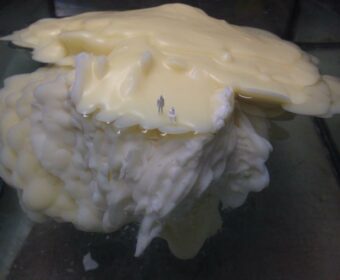We now use 14,000 wet wipes every second! But what we don’t realise is that these daily used wipes are yet another type of single-use plastic. Surprisingly, disposable wet wipes are posing multiple threats: they pollute our environment, they damage sewer systems and they end up being very costly for citizens’ pockets. Should we then reconsider the way we use them?
What exactly is the problem with flushable wet wipes?
Most wet wipes look like they are made of cotton – they are white, soft, and absorbent. However, most of them are made of polyester and polypropylene. In fact, nearly all of them are pieces of nonwoven fabric which resemble cloth or cotton qualities. In other words, most baby or toilet wet wipes are made of plastic.
Look for plastic-free wet wipes brands
Posing multiple threats
Wet wipes are being flushed down our toilets increasingly since the use of personal wipes expanded from babies to adults. The first occurring problem from this practice is that all these plastic wipes break down in small pieces and eventually end up in local sewer systems. “People might think that it’s ok to just pour a little bit of oil down their sink or to flush a couple of wipes during the day, but when you have 5 million people in a city [doing this] collectively, that will cause a major problem,” says Peter Hadfield from Sydney Waters.

What’s happening is that when flushed down our toilets, wet wipes meet and unite with fats & grease and ultimately form a fatberg. Fatbergs, as Hadfield explains in Guardian Australia, “are a really entangled mess of plastics mortared together by the fats, oils, and grease that creates this rock-hard material and creates a really big problem with blockages in pipes.” This mix of plastic wipes with fats and oils creates a mass that doesn’t easily break up which causes significant damage to sewer systems. According to Water UK’s director, Rae Stewart, sewer blockages cost £100m a year only in the UK!
| Robinson-Calver explains what we know about the process by which fatbergs form. “When the fats, oils and grease are in the sewer’s alkaline environment, they combine with all the material that gets down there, such as wet wipes and nappies, and form a mass that becomes calcified [by interaction with calcium in the sewer water] and solid. It becomes like concrete and can’t easily be broken up. The teams working in the sewers have to break them up using hand tools because the high-pressure jet hoses can’t break it down sufficiently.” |
Misleading labels and strategies
 A common marketing strategy of wipe manufacturers was to name their products as ‘flushable’ or to include on the packaging an icon of a toilet implying that this item should be disposed of through our toilets. But flushable means that is able to be flushed; not that it should! According to a Water UK report the majority of wipes that end up blocking sewer systems derive from non-flushable wipes that were not designed to be flushed. Baby wipes reflect the 75% of wipes causing sewer blockages, while makeup removal wipes & hygiene wipes are responsible for 20% of them. The good news is that some countries are slowly replacing the ‘flushable’ term or the ‘toilet’ icon with an explanatory ‘do not flush icon’. However, consumer habits and behaviour have been built for years and are proven very difficult to change.
A common marketing strategy of wipe manufacturers was to name their products as ‘flushable’ or to include on the packaging an icon of a toilet implying that this item should be disposed of through our toilets. But flushable means that is able to be flushed; not that it should! According to a Water UK report the majority of wipes that end up blocking sewer systems derive from non-flushable wipes that were not designed to be flushed. Baby wipes reflect the 75% of wipes causing sewer blockages, while makeup removal wipes & hygiene wipes are responsible for 20% of them. The good news is that some countries are slowly replacing the ‘flushable’ term or the ‘toilet’ icon with an explanatory ‘do not flush icon’. However, consumer habits and behaviour have been built for years and are proven very difficult to change.
Don’t flush wet wipes anyway
Another reason to not flush wet wipes down your toilet is biodegradability. Numerous products are labelled as ‘biodegradable’, meaning that they break up in smaller pieces – they do not completely decompose. The consequence of this is the release of millions of microfibers to the environment and the formation of further fatbergs.
And if this was not enough, wet wipes carry a hidden consequence – but this time with their formulas. Makeup removal wipes and sheet masks are soaked in solutions that are packed with microplastics. Therefore by using them, we pollute the environment by using single-use plastic and by releasing millions of microfibers & microplastics into the ocean.
Are there alternatives and plastic-free wet wipes?
- Instead of synthetic, use cotton wipes. And remember to not flush them down the toilet!
- Consider using cotton washable pads.
- Experiment with a DIY solution for makeup remover pads or give Beauty Kitchen’s compostable wipes a try!
- If you really like wet wipes, try a toilet paper spray.
- If you want to delve further into the issue of fatbergs but from a more artistic perspective, visit the FATBERG!
You might also like:
→ Get to know microplastics in your cosmetics
→ Victoria Beckham’s first skincare product is out and it’s not microplastic-free

